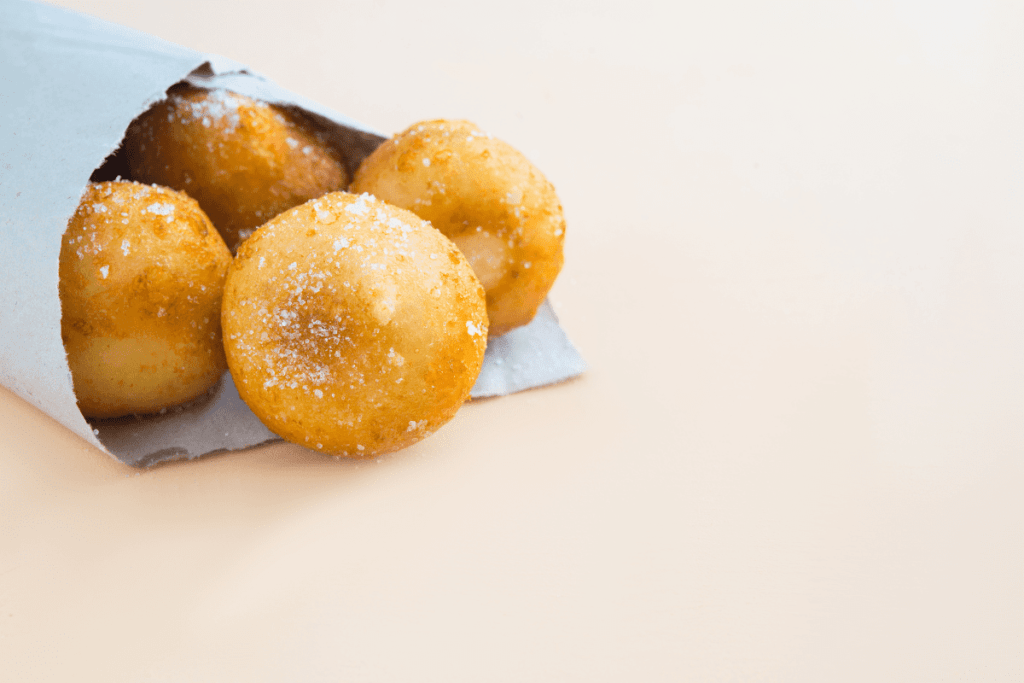November begins with the holiday of All Saints’ Day, in which we remember all our loved ones who are no longer with us and is and invitation to living together. That is why, in Spain, there is the custom of going to the cemetery to visit our ancestors, tidy their graves up and decorate them with flowers. This tradition is closely tied to Christianity, but the cult stems from ancient Celtic beliefs.
The traditional recipes of these season vary according to the Spanish regions and their cultural tradition, although sweets based on artisanal pastries are the most common. Sweets of all kinds to elude the bitter taste of death. Highlights include the Huesos de Santo, the Buñuelos de Viento, the Panellets and the Chestnuts.ç
The Huesos de Santo (Bones of the Saint) are one of the most popular and it is difficult to find them out of “season”. The original pastry consists of a small cylinder of marzipan, so one of its main ingredients is almonds, inside which a dense custard is introduced, with a solidified but spongy texture. The result, a “bone” with marrow included, which is delicious on the palate. It is estimated that saint’s bones began to be made in the seventeenth century.
Buñuelos de Viento (Wind Fritters) are made with wheat flour, butter or lard, eggs, milk, a pinch of salt and spices such as cinnamon or anise. An old recipe whose secret lies in the frying of that dough in the shape of balls, which doubles its size in the pan if done the right way, something that depends mainly on the temperature of the oil.
The Panallets are another typical sweet of this festivity, which are also made from almonds, starting from a mass similar to marzipan to which, in some cases, crushed sweet potato is added. Coated with egg white and pine nuts (or almonds) and after the oven cooking time, they are perfect as a dessert or snack.
The origin of the panellets is related to the huesos de santo, since both contain almonds, which evokes their more than likely Arab origin. Almost all these sweets have their origin in the custom of offering them to the deceased in their graves or directly to the churches. The truth is that there are only accurate references to the existence of these sweets since the eighteenth century.
In Spain, in each region, there are different traditions to celebrate the night of October 31st. Thereby, in the Canary Islands the so-called “Night of the Fianos” is celebrated, in which the streets of the villages are filled with bonfires, music and dances. At Castanyada, a traditional Catalan festival that dates back to the 18th century, families gather around a table and remember their deceased loved ones while eating roasted chestnuts. This tradition is also celebrated in some parts of the oriental Mediterranean coast and in Aragon.
In Galicia, however, Samaín is celebrated. This tradition has its origin in the Celtic celebration of the end of the harvest and consists of decorating houses with garments related to death, because the tradition says the night of Samaín disappears the boundary between the world of the living and the dead.
In the Basque Country, this festival is celebrated with a gastronomic tradition called in Baque Language Gaztañerre Eguna, which in Spanish means roasted chestnut. This festivity consists of celebrating an early dinner where roasted chestnuts are eaten as dessert, but they also enjoy other foods such as escargot with sauce, or a corn flour dough called motokil.

